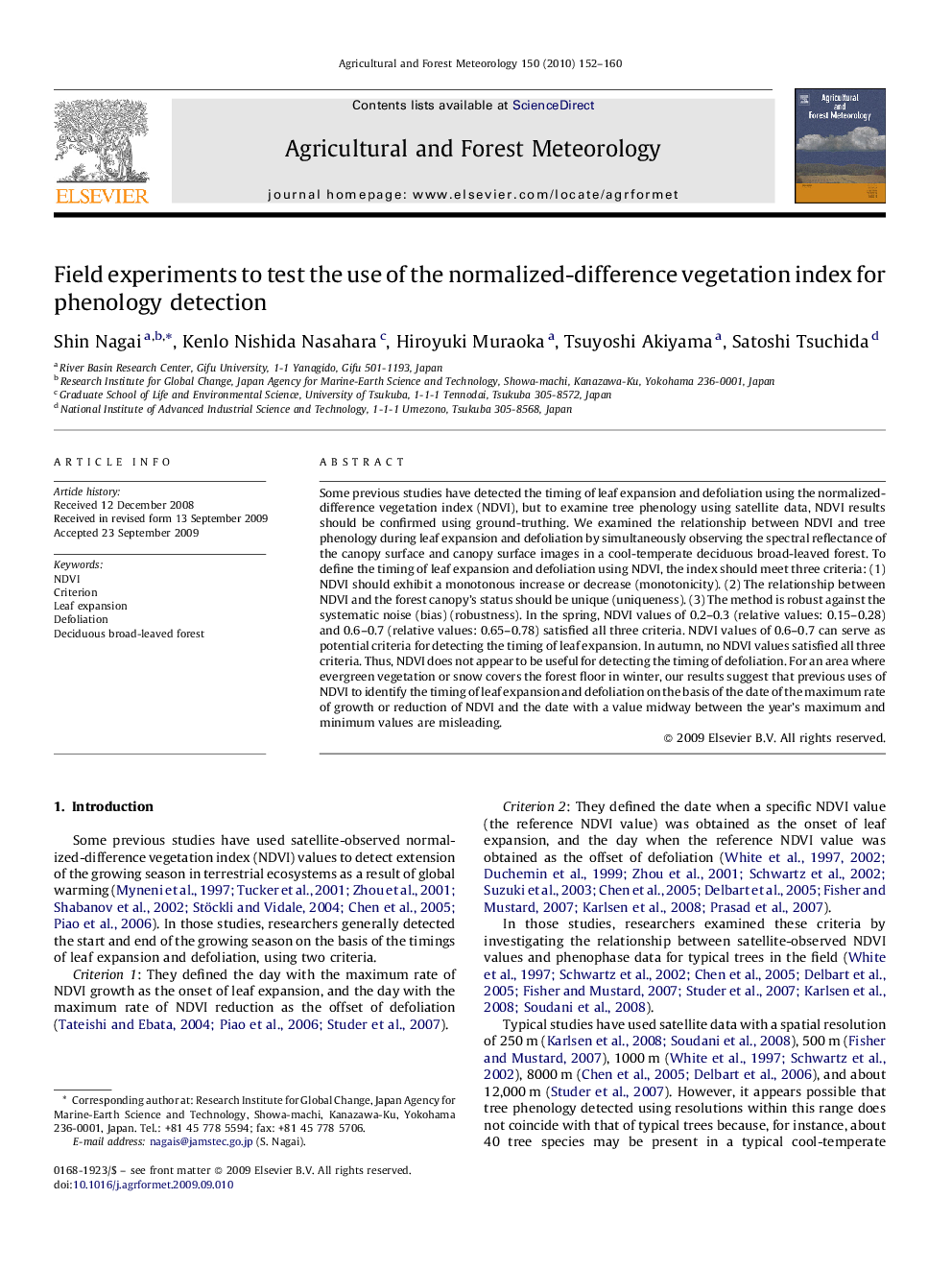| Article ID | Journal | Published Year | Pages | File Type |
|---|---|---|---|---|
| 82383 | Agricultural and Forest Meteorology | 2010 | 9 Pages |
Some previous studies have detected the timing of leaf expansion and defoliation using the normalized-difference vegetation index (NDVI), but to examine tree phenology using satellite data, NDVI results should be confirmed using ground-truthing. We examined the relationship between NDVI and tree phenology during leaf expansion and defoliation by simultaneously observing the spectral reflectance of the canopy surface and canopy surface images in a cool-temperate deciduous broad-leaved forest. To define the timing of leaf expansion and defoliation using NDVI, the index should meet three criteria: (1) NDVI should exhibit a monotonous increase or decrease (monotonicity). (2) The relationship between NDVI and the forest canopy's status should be unique (uniqueness). (3) The method is robust against the systematic noise (bias) (robustness). In the spring, NDVI values of 0.2–0.3 (relative values: 0.15–0.28) and 0.6–0.7 (relative values: 0.65–0.78) satisfied all three criteria. NDVI values of 0.6–0.7 can serve as potential criteria for detecting the timing of leaf expansion. In autumn, no NDVI values satisfied all three criteria. Thus, NDVI does not appear to be useful for detecting the timing of defoliation. For an area where evergreen vegetation or snow covers the forest floor in winter, our results suggest that previous uses of NDVI to identify the timing of leaf expansion and defoliation on the basis of the date of the maximum rate of growth or reduction of NDVI and the date with a value midway between the year's maximum and minimum values are misleading.
